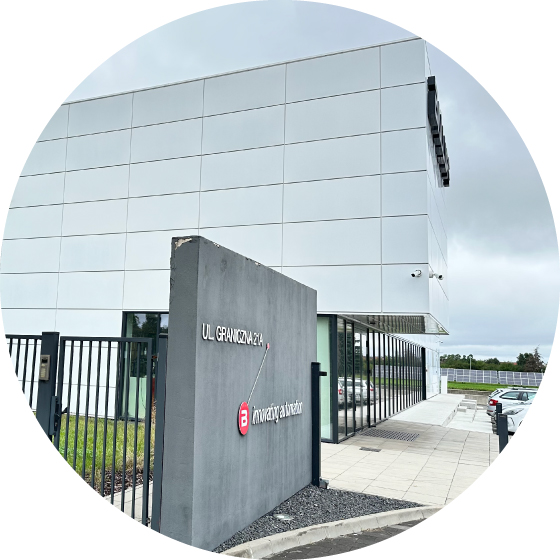What is an RFID data carrier?

Reading Time: minutes
Proximity radio communication technology is opening up new opportunities for engineers to track, identify objects and control access to premises. In this article we discuss what an RFID data carrier is and the standards and applications of proximity transponders.
Modern RFID cards are used to radio-frequently identify a variety of objects by bringing the transponder close to the appropriate reader. Their use reduces the need to physically insert the card into a special reader or slide it along an embedded magnetic stripe. We invite you to read the article in which we will discuss in more detail what an RFID carrier is, as well as their types and practical applications in industry and other sectors.
If you are interested in implementing RFID object identification and tracking technology in an industrial plant, take a look at BALLUFF's offer. Balluff are a provider of advanced RFID solutions for industrial applications.
RFID data carrier - what is it?
Before we go into a detailed discussion of the topic, let's answer the basic question - what is an RFID data carrier? Products of this type which are also described as transponders are objects, for example, in the form of plastic discs or plastic cards with dimensions similar to a credit card. Within the plastic casing there are embedded circuits containing an antenna or aerial and memory chips allowing the storage and retrieval of data.
The use of radio proximity communication technology means that there is no need for physical contact between the reader and the transponder or data carrier. There are several types of RFID data carriers, differing in construction design and principle of operation. We have described them below.
Passive RFID carriers- are among the most common solutions used in industrial identification systems and access control or time and attendance systems. They have no internal power source. They are powered by the excitation of an external electromagnetic field (radio waves) emitted by the RFID reader, thanks to the induction phenomenon.
Active RFID carriers- Unlike passive tags, the active data carriers have built-in power (usually battery-powered). They transmit a signal continuously and do not need to be energised by being brought close to the RFID system reader. They are used in high-value and high-speed asset tracking systems, such as in industry and toll booths.
Semi-passive RFID carriers- represent a functional compromise between active and passive tags. Semi-passive RFID tags are components equipped with a chip, antenna and battery. However, they do not have a built-in transmitter. They are characterised by a smaller operating range than active tags. At the same time they provide broader functionality than passive versions.
The selection of a suitable RFID solution depends on the project requirements. Individual solutions may also differ in frequency of operation: 125 kHz, 13.56 MHz and 860-960 MHz.
What are the RFID data carrier standards?
Engineers delegated to design RFID systems using inductive proximity technology will be interested in standardisation in this area. What are the standards for RFID cards?
RFID LF
Devices operating at 125 kHz, offering a low range of a few centimetres. Used in access control systems and as tracking tags in logistics, for example.
RFID HD
Components designed to operate at 13.56 MHz frequency (standard e.g. Mifare, NFC). They provide a range of up to several tens of centimetres and are used for example, in access control systems, logistics and proximity transactions.
UHF RFID
UHF standard covering frequencies of 865-868 MHz, providing a range of up to 15 metres. Will allow multiple RFID tags to be read simultaneously. It is used in marking company assets, recording goods or logistics.
The different frequencies determine the physical size of the antennas required transmit and receive RFID signals. Differences are also evident in the use of appropriate communication protocols.
RFID application in an organisation
Innovative RFID data tags with a unique code are used in a number of different areas. Where can we see examples of this type of system in use?
- Industry, logistics and mining.
- NFC proximity communication in smartphones.
- Contactless payments during shopping.
- Management of company assets.
- Access control systems.
Proximity radio communication technologies are also used in road and highway toll stations.
RFID and radio frequency identification in industry
Convenience and speed are driving RFID's increasing use in industry. Organisations that have implemented BALLUFF tool-tagging systems, among others, confirm that RFID-enabled products make it possible to speed up and reduce the cost of process execution. The ability to read from a long distance allows their use in supply chain automation.
If you are considering the implementation of systems using RFID technology to support the implementation of industrial and logistics processes, get acquainted with BALLUFF's offer. Contact the supplier's customer service representative and ask about an offer for your business!
Keywords
- RFID
Author

Balluff Sp. z o.o.
We have been active on the Polish market for more than 25 years. We serve our customers from Pomerania to the Tatra Mountains, providing first-class service and technical support. We are also present online, where we share our knowledge about the latest implementations, industry trends, events or technical aspects of our solutions.
41 Contributions
Comment
Popular posts
What is a capacitive sensor?
How do I wire my 3-wire sensors?
Industrial sensing fundamentals – NPN vs PNP
The industrial revolution - from the steam engine to Industry 4.0
Contact form
Do you have any questions or suggestions? We are at your disposal.
Balluff Limited
-
20 Cheshire Business Park
Cheshire Avenue
Lostock Gralam
Northwich, CW9 7UA
